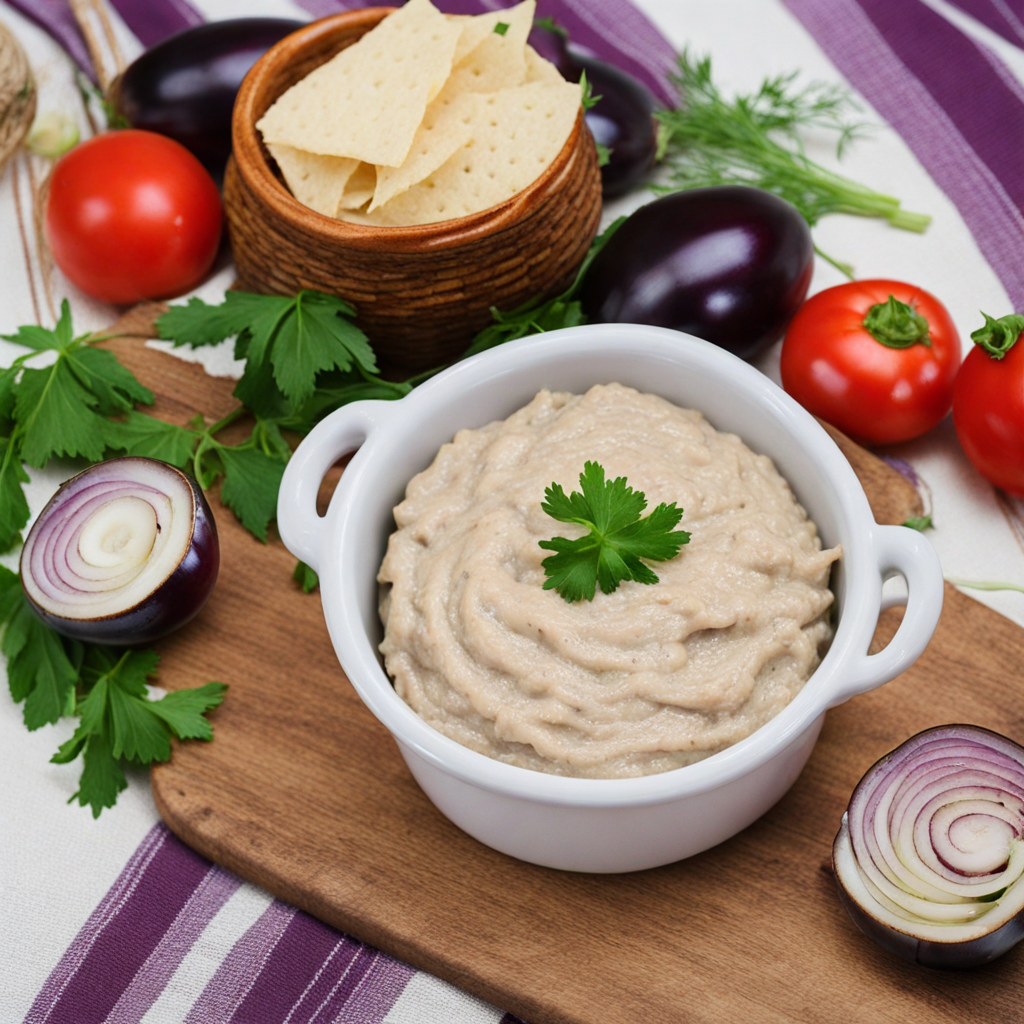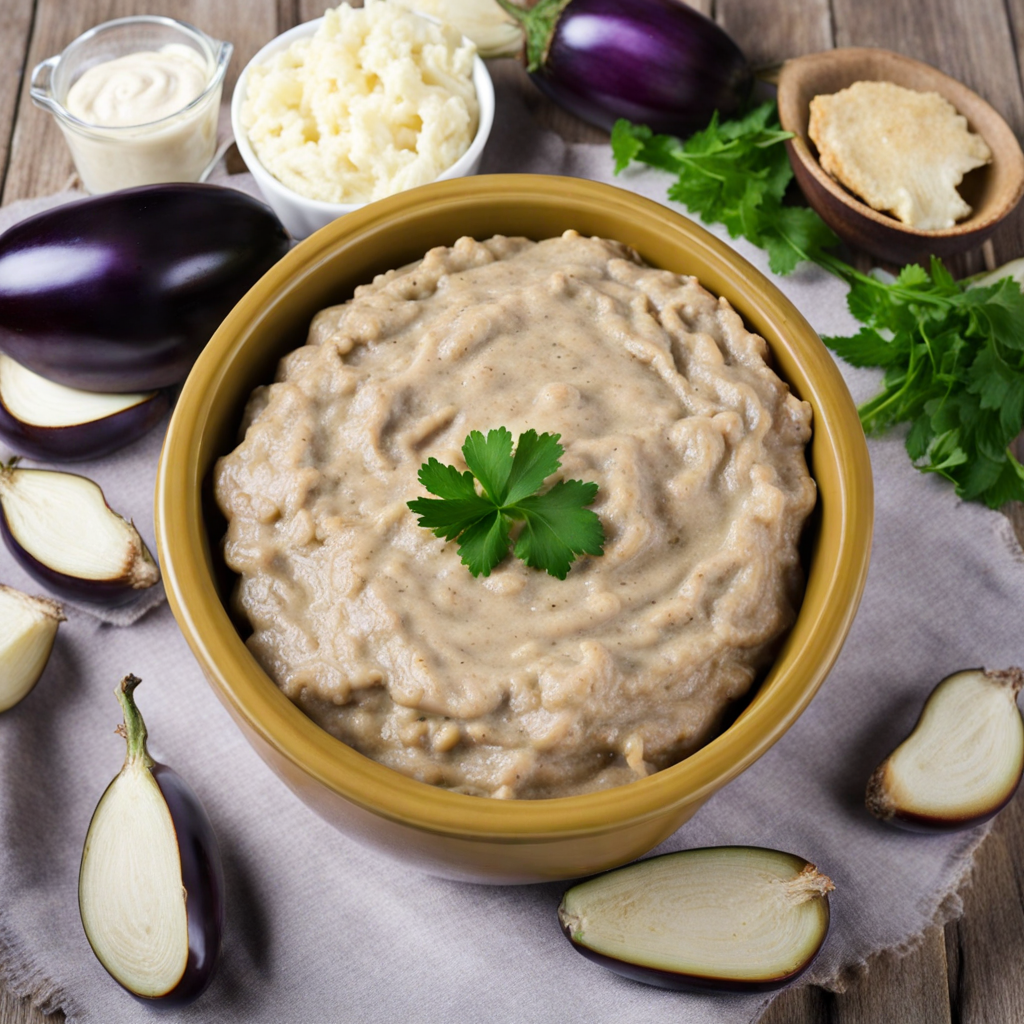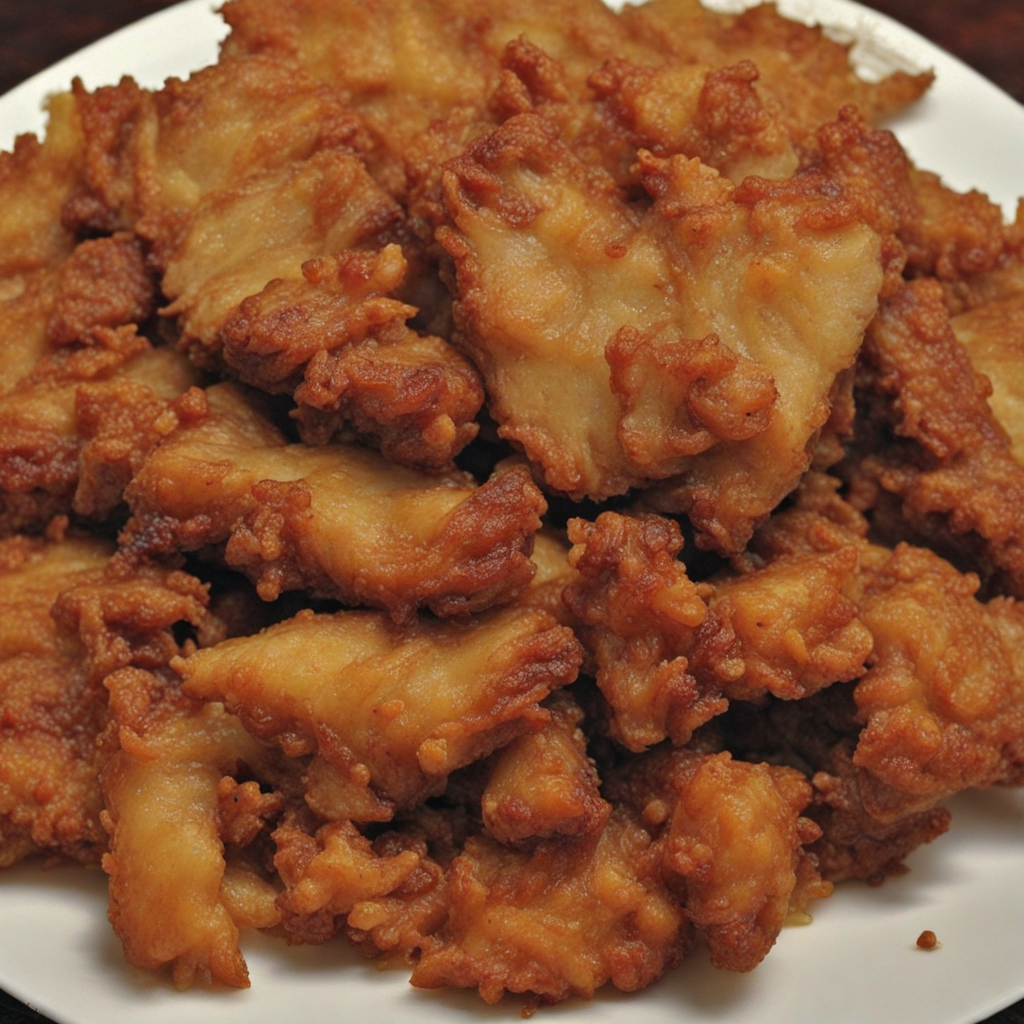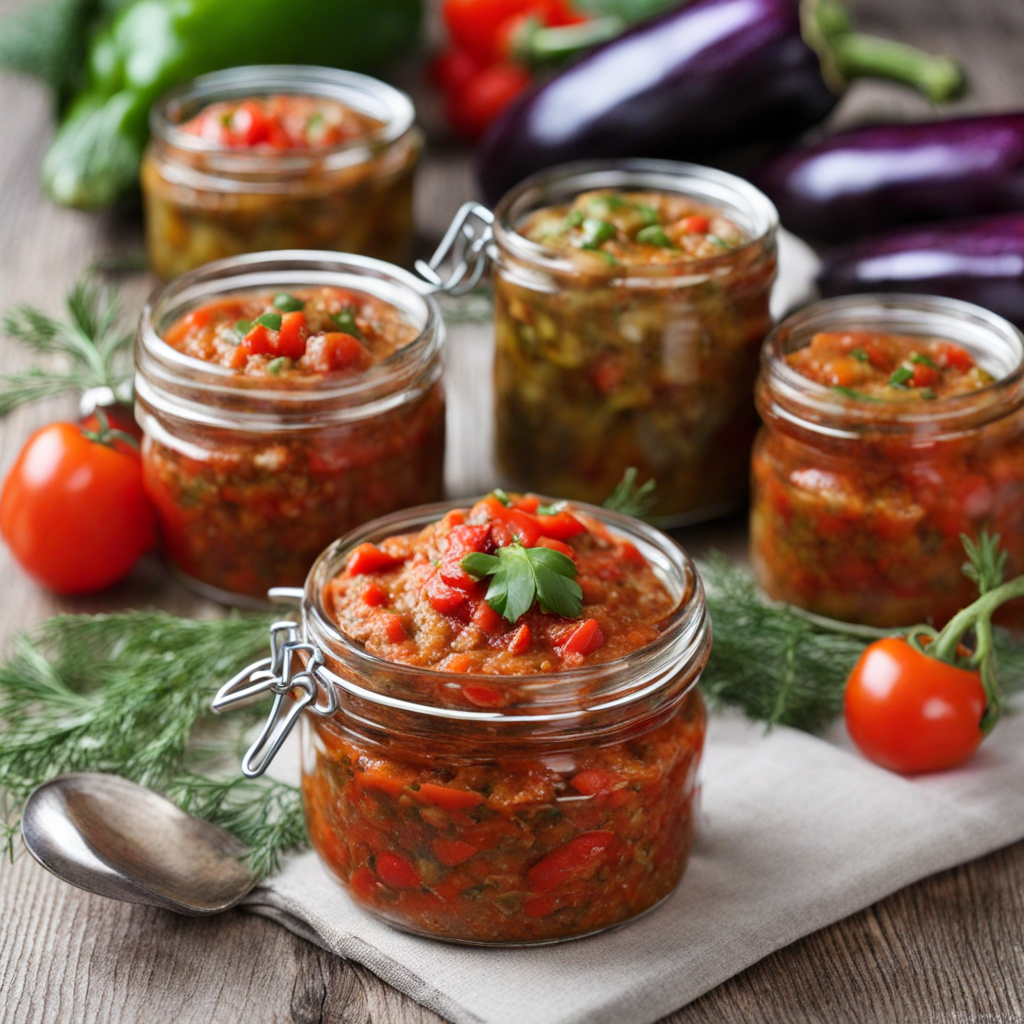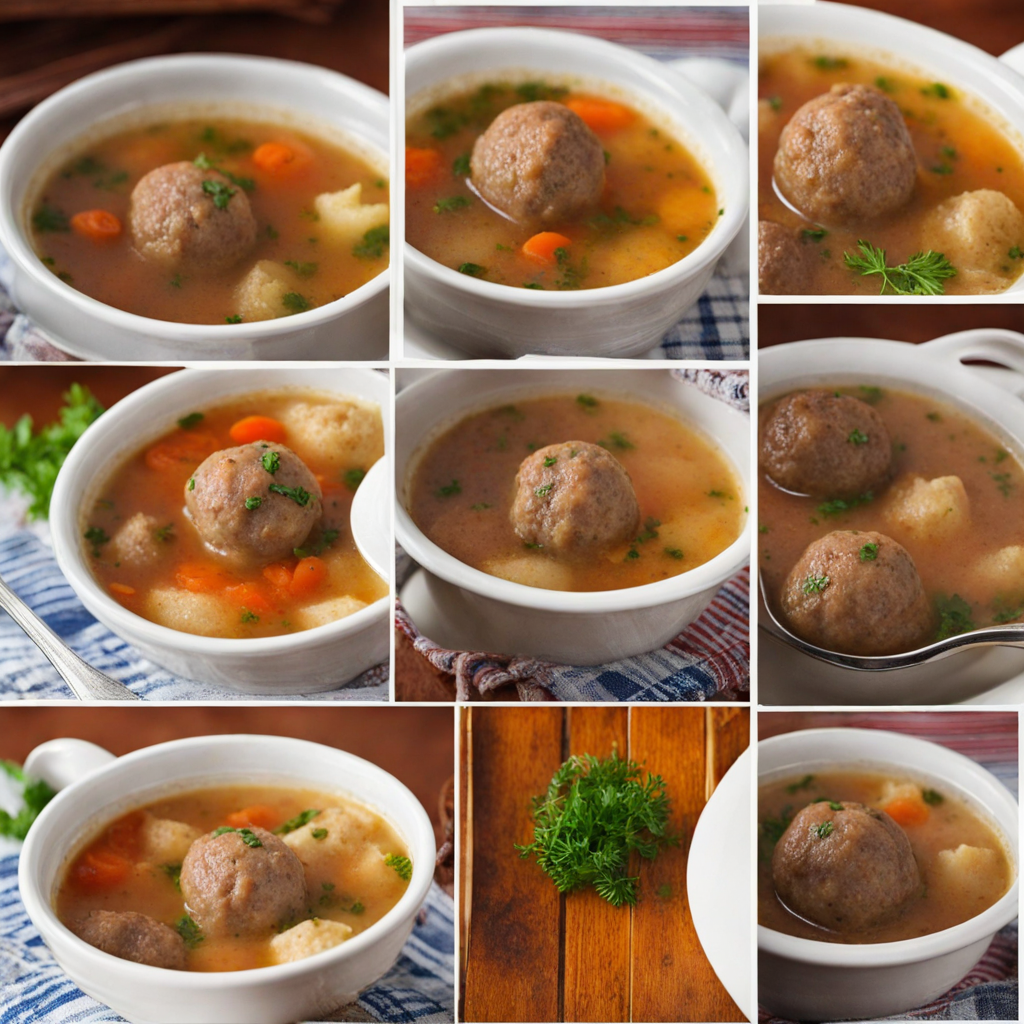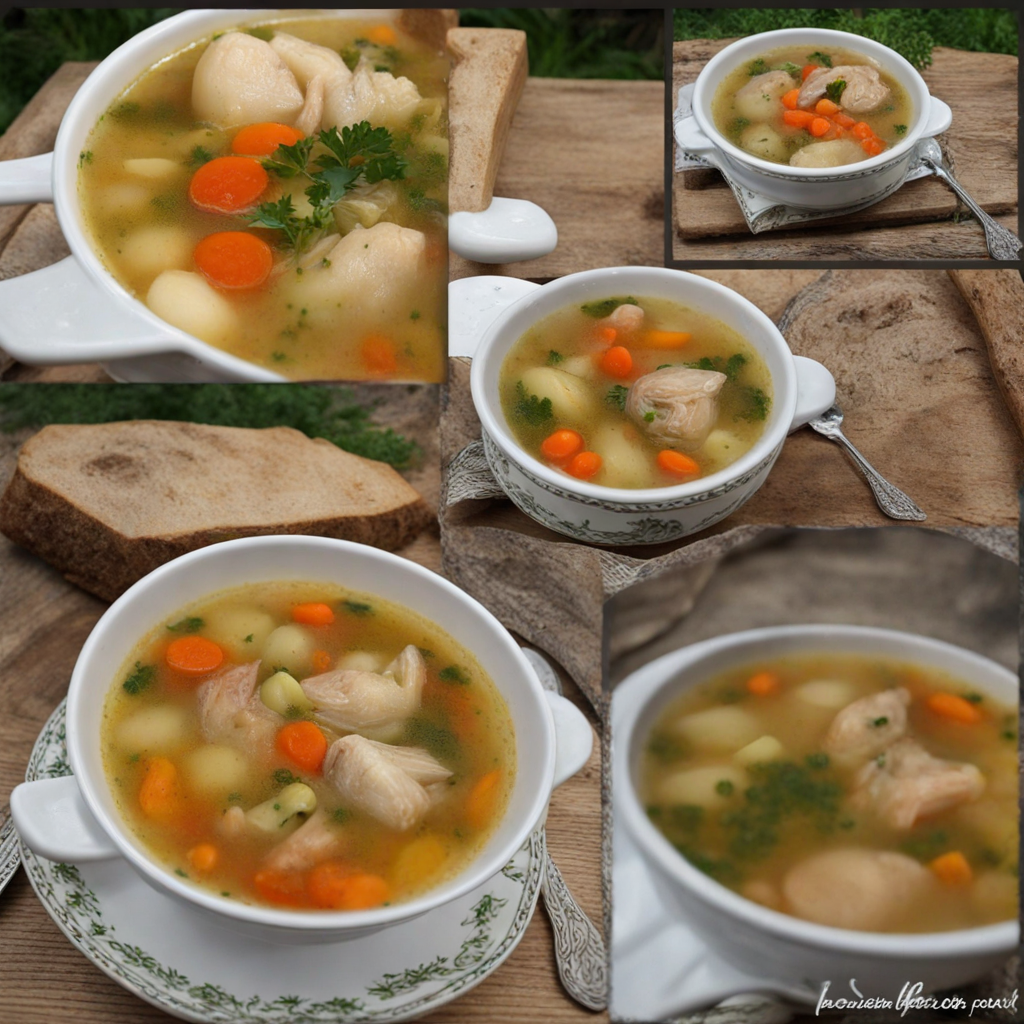Eggplant Dip
Eggplant Dip, known as "mămăligă cu vinete" in Romania, is a delightful and smoky spread that showcases the rich flavors of roasted eggplants. The dish typically begins with the eggplants being charred over an open flame until the skin becomes blackened and the flesh inside is soft and creamy. This roasting process imparts a deep, smoky flavor that forms the foundation of the dip, making it a perfect companion for bread or fresh vegetables. Once roasted, the eggplants are peeled and blended with ingredients such as garlic, olive oil, and lemon juice, creating a smooth and velvety texture. The addition of garlic not only enhances the depth of flavor but also adds a hint of pungency that beautifully complements the earthiness of the eggplants. Some variations may include chopped herbs or spices, like parsley or cumin, which can elevate the taste profile, making it more aromatic and vibrant. Eggplant Dip is often served as an appetizer or a snack, perfect for gatherings or picnics. It’s typically accompanied by crusty bread, pita, or even as a dip for fresh vegetables, making it a versatile dish that can suit various occasions. The combination of the smoky eggplants with the tangy notes from the lemon and the richness of olive oil creates a harmonious balance that will tantalize your taste buds and introduce you to the authentic flavors of Romanian cuisine.
How It Became This Dish
The Enigmatic Journey of Salată de Vinete: A Romanian Culinary Treasure #### Origins: The Birth of a Culinary Classic Salată de vinete, translating to "eggplant salad," is a beloved dish in Romanian cuisine that showcases the culinary ingenuity of the region. Its origins can be traced back to the introduction of eggplants into Europe, which is believed to have occurred during the Islamic Golden Age. The eggplant, originally cultivated in India and later taken to the Mediterranean by Arab traders, quickly found a home in Eastern European gardens, including those in Romania. The dish itself is thought to have emerged in the late 19th to early 20th century, coinciding with the period of modernization and cultural exchange in Romania. This was a time when traditional recipes began to be influenced by foreign culinary practices, particularly from the Ottoman Empire, which had a profound impact on Romanian gastronomy. The Ottomans introduced various cooking methods and spices, blending flavors that would shape the local palate. #### Cultural Significance: More than Just a Dish Salată de vinete is not merely a dish; it embodies the spirit of Romanian hospitality and communal dining. It is typically served as an appetizer or a spread, often accompanying fresh bread, and is a staple at gatherings, celebrations, and family meals. The preparation of this dish is often a communal activity, bringing families and friends together in the kitchen, where the smoky aroma of roasted eggplants fills the air. In Romanian culture, food is deeply intertwined with identity and tradition. Salată de vinete serves as a symbol of home-cooked comfort and nostalgia. For many Romanians, the experience of enjoying this dish evokes memories of family gatherings, particularly during festive occasions like Christmas or Easter. It is often associated with the end of summer when eggplants are harvested, and locals prepare large batches to enjoy throughout the year. The dish also holds significance in the context of national pride. During the communist era, when Romania was isolated from the rest of Europe, Salată de vinete became a representation of the country's culinary heritage. It was a way for Romanians to express their identity through food, even as outside influences crept in. Today, it stands as a testament to the resilience and adaptability of Romanian cuisine. #### Development Over Time: A Culinary Evolution The basic ingredients of Salată de vinete are simple: roasted eggplants, finely chopped onions, oil, and salt. However, over the years, different variations of the recipe have emerged, reflecting regional preferences and personal tastes. The traditional method involves roasting the eggplants over an open flame or in an oven until the skin is charred and the flesh is tender. This method imbues the dish with a distinctive smoky flavor, which is a hallmark of authentic Salată de vinete. In the early days of its popularity, the dish was often prepared in a rustic manner. The roasted eggplants would be peeled, mashed, and mixed with chopped onions and sunflower oil. The proportions of these ingredients varied from household to household, with some opting for a creamier texture by adding mayonnaise or yogurt, while others preferred a more straightforward, less rich version. As Romania navigated through the tumultuous events of the 20th century, including two world wars and a period of communist rule, the recipe for Salată de vinete adapted to the changing times. During the communist regime, when resources were scarce, families learned to make the most of what they had. This meant that the salad sometimes included other ingredients like red peppers or even olives, reflecting a resourceful approach to cooking. In recent decades, with the advent of globalization and the influence of culinary trends from around the world, Salată de vinete has continued to evolve. Modern interpretations often feature gourmet twists, such as the addition of roasted garlic, herbs, or even feta cheese, catering to a younger audience that seeks new flavors while still appreciating traditional roots. Moreover, the rise of vegetarianism and veganism has further popularized Salată de vinete, as it aligns perfectly with plant-based diets. Its rich flavors and satisfying texture make it a fantastic alternative to meat-based spreads, appealing to both health-conscious consumers and those looking to explore the vibrant world of Romanian cuisine. #### Salată de Vinete in Contemporary Romania Today, Salată de vinete is celebrated not only in homes across Romania but also in restaurants and food festivals, where chefs showcase their unique interpretations of the classic dish. It has gained recognition beyond Romania's borders, often appearing on menus in Eastern European restaurants around the world. The dish serves as a culinary ambassador, inviting people to explore the rich tapestry of Romanian culture through its flavors. At food festivals, visitors can participate in workshops to learn the traditional methods of preparing Salată de vinete, highlighting its role as a cultural artifact. These events often include tastings, where people can sample various versions of the dish, illustrating the diversity of flavors and techniques employed by different chefs and home cooks. In Romania, the dish is also often paired with local wines or traditional spirits like țuică, a plum brandy, enhancing the overall dining experience. This pairing reflects the Romanian philosophy of enjoying food as part of a larger narrative of tradition, community, and celebration. #### Conclusion: A Legacy of Flavor and Tradition Salată de vinete is more than just a dish; it is a reflection of Romania's rich culinary history and cultural identity. From its humble beginnings to its modern-day adaptations, it serves as a testament to the resilience and creativity of the Romanian people. As the world continues to embrace diverse cuisines, Salată de vinete stands out as a symbol of culinary heritage, bridging generations and inviting future explorers to savor its delightful flavors. As we look to the future, it is clear that Salată de vinete will continue to evolve, adapting to new tastes while preserving the essence of what makes it a cherished part of Romanian cuisine. Whether enjoyed at a festive gathering or a casual meal, this beloved eggplant salad remains a poignant reminder of the power of food to connect us to our roots and to each other.
You may like
Discover local flavors from Romania


